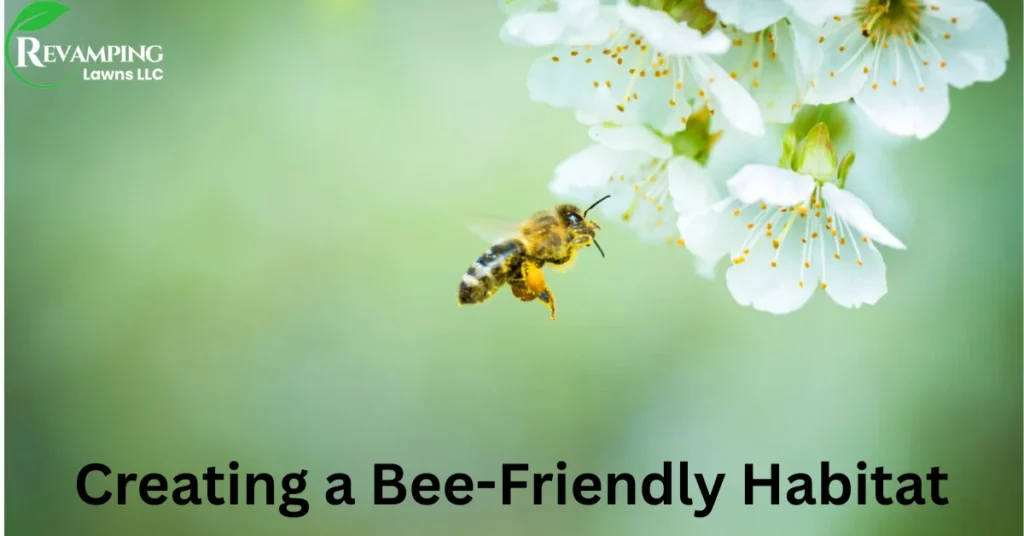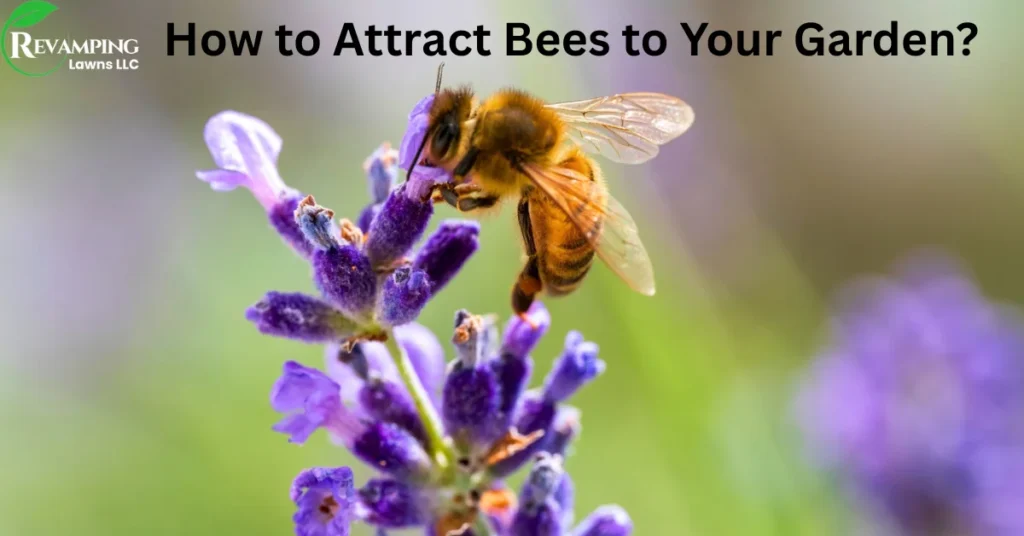Bees are important pollinators, which are very necessary in plant reproduction, mostly in gardens. Without them, a lot of your fruits, vegetables, and flowers will not do so well. But have you ever asked yourself how to attract bees to your garden? You are not the only one. In this guide, we will highlight quick solutions to attract more bees to your area, whether it’s a backyard, a balcony, or a small urban garden.
Why Attract Bees to Your Garden?

Bees are much more than charming garden guests. Making your garden bee-friendly is an easy way to not only maintain your garden but the greater ecology as well. A garden full of bees is most likely to be a garden full of life, colour, and productivity. Whether you are a home gardener or just take care of a beautiful flower bed, having bees visit your area will be very rewarding.
The Importance of Bees for Pollination
Pollination is the way to reproduce many plants and bees are one of the most effective pollination agents. By visiting flowers to gather nectar and pollen, bees assist in the fertilization process which results in fruits, seeds and plant growth. Approximately three-quarters of all flowering plants on Earth depend on pollination, and bees do most of it.
The lack of bees can reduce the productivity of your garden significantly. Without adequate pollination, many fruits and vegetables will not develop, or will develop weakly, such as tomatoes, cucumbers, and berries.
Bees vs. Other Pollinators: Why Focus on Bees?
Butterflies, beetles and birds also help in pollination but bees are special in their commitment. Bees deliberately seek pollen as one of their main food sources unlike other pollinators who visit flowers occasionally or to address a particular need. This gives their pollination patterns greater consistency and efficacy.
Another thing about bees is that they show what is known as flower constancy, that is, they remain in a single type of flower in a foraging trip. This activity highly increases the probability of the cross-pollination success as opposed to the more disruptive visitors such as flies or wasps.
How Bees Benefit Your Vegetable Garden?
Bees are your greatest friends in case you have a vegetable garden. Vegetables such as zucchini, squash, peppers and eggplants are heavily dependent upon bee pollination in order to set quality fruit. A bee garden will guarantee that your vegetables will grow more evenly and to their maximum size and flavor.
Additionally, your overall biodiversity in the garden can be increased with bees. With their higher pollination rates, bees also indirectly promote the growth of other useful plants and insects to make your backyard ecosystem stronger and more sustainable.
Best Plants to Attract Bees
Designing a bee-friendly garden follows one simple rule: plant selection. Flowers, shrubs and trees will give the bees the nectar and pollen they require to live and in exchange, the bees will pollinate your garden and allow it to prosper. Not every plant, though, is equally good in the eyes of a bee. Bees find some of them very attractive and others have little or no value. This is the part where we talk about the most optimal plants to attract bees, whether it be the old favorites flowers, native plant saviors, and even what to avoid.
Top 10 Flowers That Attract Bees
Some flowers attract bees more than others, depending on color, shape, and the availability of nectar. Among the most favorite bee-attracting flowers are:
1. Lavender
2. Coneflower (Echinacea)
3. Bee balm (Monarda)
4. Borage
5. Sunflowers
6. Black-eyed Susans
7. Zinnias
8. Crocus
9. Asters
10. Cosmos
Not only do these flowers create a feast for different kinds of bees, but they also create a home, which makes them a must-have in any pollinator-friendly garden.
Native Plants vs. Exotics: What Bees Prefer
Local bees have evolved with native plants; they form a stable food source and habitat choice. Exotic plants may be attractive; however, most of them do not generate the correct kind or quantity of nectar that bees need. By comparison, native species tend to flower when they should, and provide pollen that bees can readily reach. Using native plants will guarantee greater compatibility with local pollinators.
Trees and Shrubs That Bees Love
Flowers may take the limelight, but trees and shrubs are essential in sustaining the bee population.
- Sources as willow, linden, redbud, and serviceberry are significant sources of pollen.
- Honeyberries, blueberries, raspberries, and elderberries.
- Incorporating trees and shrubs will increase the time frame for foraging and provide structure to your bee-friendly area.
Plants to Avoid (Flowers Bees Don’t Like)
Not all flowers are friendly to bees. Certain decorative plants have been selected based on aesthetics as opposed to their functionality, creating the phenomenon of double blooms, which do not have readily available nectar.
- Marigolds, impatiens, and petunias are not pollinator favorites.
- Plants with a low or absent smell.
- Plants that do not produce nectar.
Identifying the plants to avoid will allow you to make the most bee-friendly garden.
Creating a Bee-Friendly Habitat

Getting bees to visit your garden is not just a matter of planting a few flowers that they like, but also of making them feel secure, fed, and taken care of in all stages of their lives. By making your garden bee-friendly, you are essentially a part of a bigger ecosystem, which will ensure the longevity of your local ecosystem.
How to Design a Pollinator Garden
• Select a variety of flowering plants
• Combine tall, medium and low-growing plants
• Plant clusters of the same species- bees can forage more efficiently.
• Native plants have climatic adjustment and are better known and loved by local pollinators.
• Choose sunny planting sites, particularly where bees are active in the mornings.
• Dense planting, hedges, or fences can be used to make sheltered microclimates.
• Provide ground-nesting bees with some undisturbed, bare earth in which to nest.
Providing Water Sources for Bees
Although the majority of individuals consider bees as only nectar-foragers, they also require water to sustain their lives, particularly in hot months. Bees utilize water to chill their hives as well as hydrate. The trick here is to provide them with shallow and easy water points where they cannot drown. This can be in the form of birdbaths having pebbles or small dishes having floating corks. Having a source of water ensures that your garden is more enjoyable and useful to busy bees on the move.
The Role of Sunlight and Shelter
Bees are animals that love the sun, and they do not survive well in cold and dark areas. You must plan your garden so that it gets exposure to the sun rays- particularly in the morning hours when bees are more active. Moreover, it is essential to have protection against the wind and rain. Refuge can be found in such natural features as thick hedges, stone walls, and even logs placed in a strategic position. Patches of bare soil are also required by ground-nesting bees that comprise a significant part of native species, so it is best not to disturb some areas.
Strategies of Bee Attraction in seasons
Learning about the seasonal behavior of bees is crucial to having a thriving pollinator garden in any season. Although bee activity is at its peak in the spring and summer, your actions (or inaction) during the fall and winter will define the number of bees you will have come the following season. The bees are responsive to the variations in temperature, flowers, and shelter, and so different approaches are necessary in different seasons of the year. The seasonal growth of a garden has a higher chance of sustaining a healthy bee population.
Spring and Summer: Peak Bee Activity
It is during the busiest seasons for bees. Bees come out of hibernation in the spring and early summer and start foraging at full throttle. It is during this period that your garden must be in full flower, providing an excellent source of nectar and pollen. Make sure that there are different flowering plants that flower at different times, ensuring bees have constant food supplies during the warmer months.
Fall and Winter: Preparing for Next Year
The cooler months are when bee activity is at a slow point; nevertheless, fall and winter are important seasons to prepare. Plants that bloom late in the season can offer bees food while they prepare to go dormant. We can also provide by leaving plant debris, seed heads, and bare areas of soil, which are necessary overwintering habitats, to several different kinds of bees. These will help your garden to be a bee-friendly place again once they come back in spring.
Advanced Tips to Attract More Bees
After you have established a bee-friendly garden, there are other measures you can apply to increase bee activity even more. It is a set of advanced tricks, including how to directly manipulate the instincts of bees.
How to Use Sugar Water to Attract Bees (Safely)
In the short term, bees can be given a sugar water solution to increase energy. However, this should only be done early in the spring or in times of drought when nectar is unavailable. It must be applied with caution so as not to interfere with natural foraging behavior. To be on the safe side, it needs to be properly diluted, used in clean containers and over a short period of time.
Building or Buying a Beehive (Natural Attraction)
Having a beehive in your garden not only invites bees but also helps in sustaining their life cycle. Also, whether you buy a prepared hive or construct one, it turns into a primary cluster to attract pollinators. The approach is especially ideal when a gardener is interested in keeping honey bees or helping out the local colonies.
How to Lure a Swarm of Bees to Your Garden?
To attract a swarm, a combination of the right habitat, odors such as lemon balm or beeswax, and in some cases even hollow hive boxes. This might sound sophisticated, but it is a natural method of inviting a new colony to colonize, particularly in case your garden is already rich in floral resources.
Colors and Scents That Attract Bees
Bees are biologically attracted to particular colors and scents. Their favorite flowers are blue, purple, white and yellow and those that have mild sweet fragrance. Learning about the perceptions of the bees will allow you to select plants and features that bees prefer which will result in higher chances of visits.
Conclusion
To attract bees to your garden, it is not enough to plant a couple of flowers, but to provide them with the environment that will guarantee their needs throughout the year and will be different, diverse, and chemical-free. Regardless of whether it is a suburban backyard or a city balcony, these tips will assist you in attracting bees to your garden and making them visit it again and again.
With a few simple modifications, you can transform your garden into a pollinator haven and increase its productivity too.
FAQs
Yes, zinnias do very well to attract bees. Their attractive appearance (bright colors), as well as the availability of pollen, makes them popular with different kinds of bees, particularly when they are planted in groups.
Bees are attracted by the color yellow and other vivid colors such as blue and violet. Honey is not spread to entice bees specifically but their odor sometimes entices them. Nevertheless, it is much more dependable when fresh flowers are used.
Absolutely. Many different types of native bees do not need hives and will be delighted to forage in a garden that has the appropriate plants, cover, and water. Even without having honey bees, a well-established pollinator garden will attract bees.



